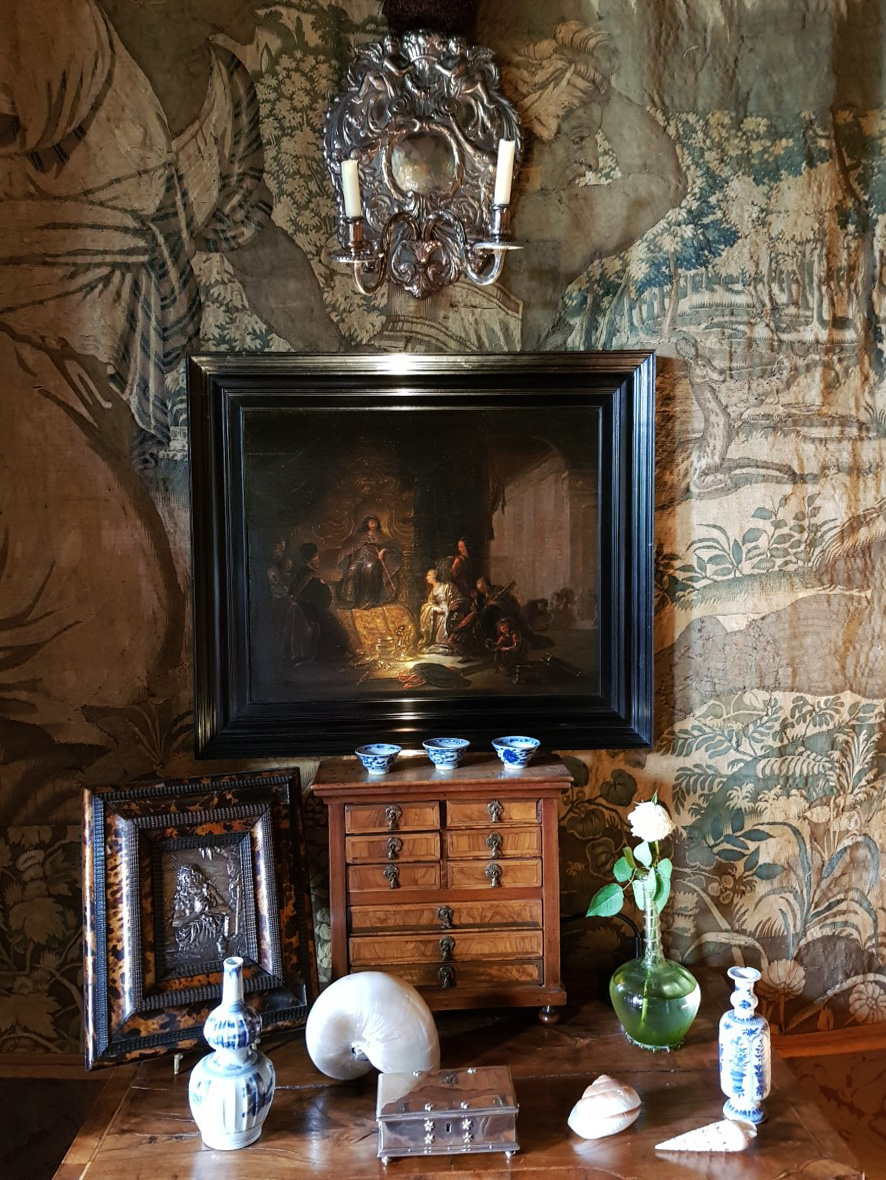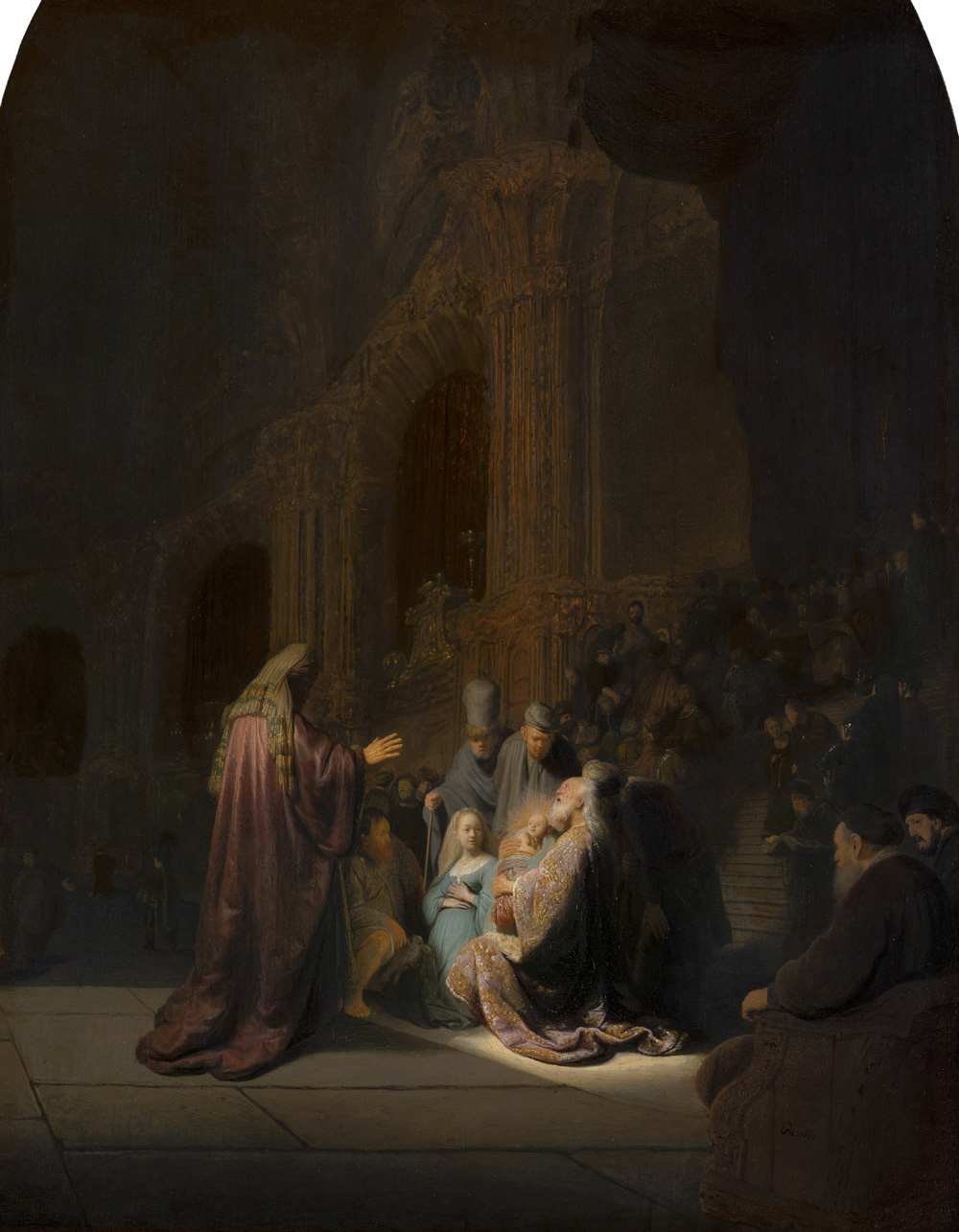JACOB DE WET I (Haarlem c. 1610 – c. 1675 Haarlem)
Jacob de Wet I (Haarlem c. 1610 – c. 1675 Haarlem)
Solomon and the Queen of Sheba
Oil on panel (cradled), 44.4 x 55.5 cm (17.5 x 21.9 inch); presented in a modern ebonised frame of 17th-century model
Signed ‘J. D Wet’ (lower centre)
Provenance
Count Alexis Bobrinsky (St Petersburg 1893 – London 1971).; anonymous sale, Christie’s, Amsterdam, 11 May 1994, lot 100; anonymous sale, Sotheby’s, Amsterdam, 8 May 2000, lot 45 (sold Dfl. 43.200); anonymous sale, Christie’s, South Kensington, 11 July 2008, lot 105
Literature
~ A. Jager, ‘Galey-schilders’ en ‘dosynwerck’: de productie, distributie en consumptie van goedkope historiestukken in zeventiende-eeuws Amsterdam, s.l. 2016, p. 469
~ A. Jager, ‘The workshop of Jacob de Wet (1610-1675) and his mass production of history painting’, Oud Holland, 131, 2018, pp. 77-85, fig. 24 on p. 78
***
Jacob de Wet was born around 1610 in Haarlem as the son of the Catholic Bailiff Willem Jansz de Wet and Marritge Jacobsdr.1 His earliest known work dates from 1632, the year in which he joined the Haarlem guild of St Luke. De Wet may have been trained by his grandfather, the painter Jan de Wet, whose oeuvre remains nearly completely unknown. De Wet’s paintings show a strong a awareness of the paintings of Pieter Lastman and the early Rembrandt, and it cannot be excluded that he studied with the latter.
De Wet led a successful studio in Haarlem and is known to have trained some 37 pupils. He specialised in paintings with biblical subjects and nearly all his surviving works are taken from subjects from the Old and New Testament. Among his pupils were Paulus Potter, Job Berckheyde, Jan Vermeer of Haarlem, and his own son Jacob de Wet II. De Wet was known as a connoisseur of painting, and in 1671 he was chosen as one of fifteen ‘best connoisseurs’ to judge the paintings by Italian masters in the collection of Gerrit Uylenburgh. The only seventeenth-century portrait of De Wet was sold by ourselves to the Noord-Hollands Archief in 2015.
The history of Solomon was frequently depicted by Jacob de Wet and his studio, but only rarely by other seventeenth-century artists; exceptions are Willem de Poorter and Salomon Koninck, both associated with Rembrandt. This particular scene was taken from 1 Kings 10:10-13. The painting is proudly signed and is likely to date from the period around 1640, when De Wet was at the height of his career. Influences from Rembrandt are particularly strong in this piece, and it can be considered one of the artist’s most accomplished works to have survived – indeed, in the year 2000 it commanded the third highest price ever paid for a work by the artist. As an example of a work by Rembrandt which was of influence on this painting, one can cite his Simeon’s Song of Praise of 1631 in the Mauritshuis in The Hague (fig.).2 The present work can also be compared to De Wet’s Christ Blessing the Children in the Rijksmuseum in Amsterdam (fig.).3
During the middle of the twentieth century, this present work was owned by Count Alexis Brobinsky. The Counts Bobrinksy descended from Count Alexis Bobrinsky (1762-1813), illegitimate son of Catherine the Great, Empress of Russia, and her lover, Count Grigory Orlov). A Landscape with Peacocks and other Birds by Melchior de Hondecoeter, also from the collection of Count Bobrinsky, London, was with Christopher Hodsoll Ltd., London in 2008.
This painting is entered in the databases of the Rijksbureau voor Kunsthistorische Documentatie (RKD) in The Hague under artwork no. 16504.
SOLD
1. For the artist, see: A. Jager, ‘The workshop of Jacob de Wet (1610-1675) and his mass production of history painting’, Oud Holland, 131, 2018, pp. 67-103.
2. Panel, 60.9 x 47.9 cm, inv. no. 145; J. Bruyn et al., A corpus of Rembrandt paintings, Dordrecht/Boston 1982 - , vol. VI (2015), no. 47, repr.
3. Panel, 55 x 45 cm, inv. no. SK-A-1350; P.J.J. van Thiel, All the paintings in the Rijksmuseum, Amsterdam 1976, p. 603, repr. This painting was formerly in the collection of Dr Abraham Bredius.

